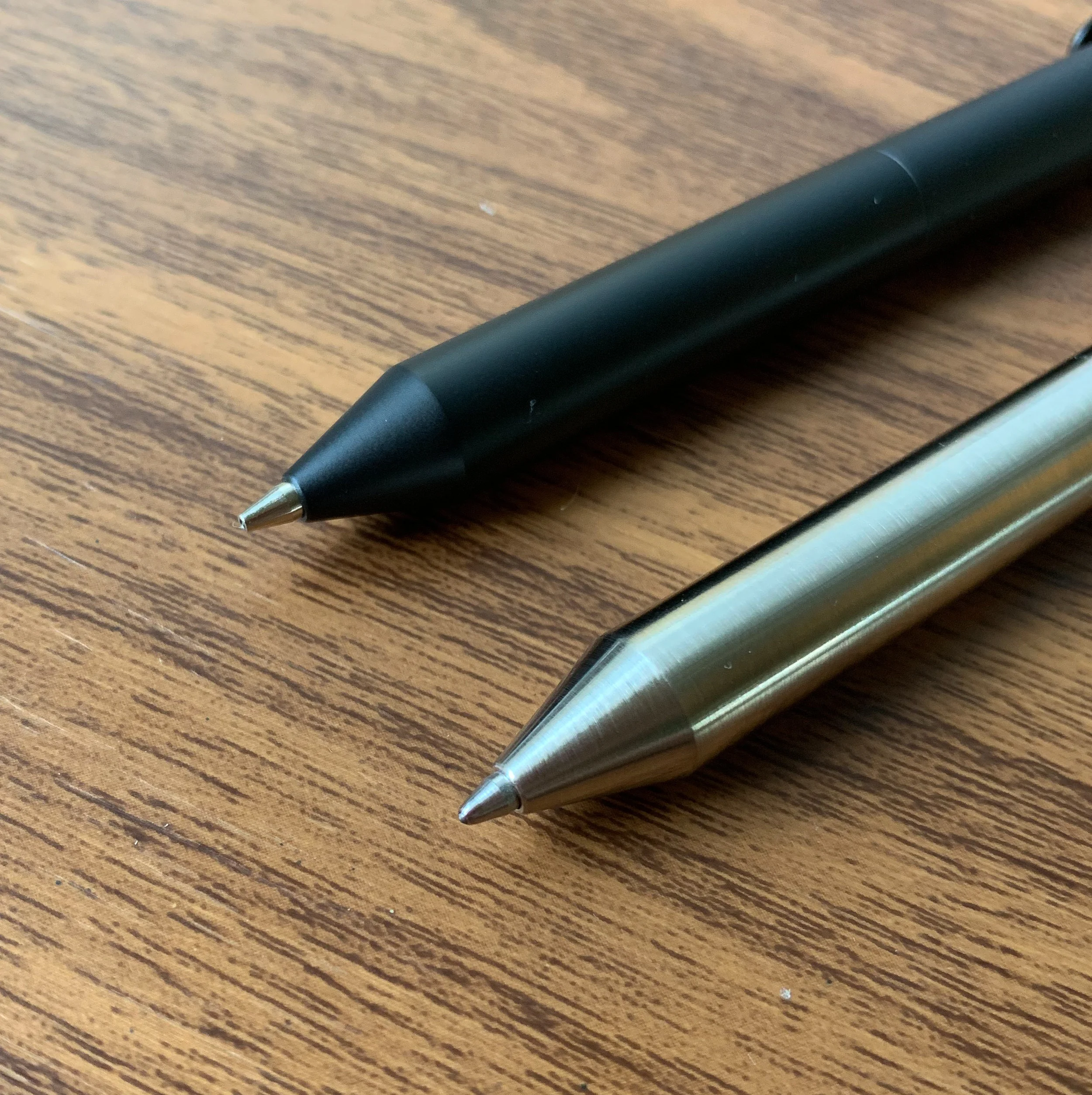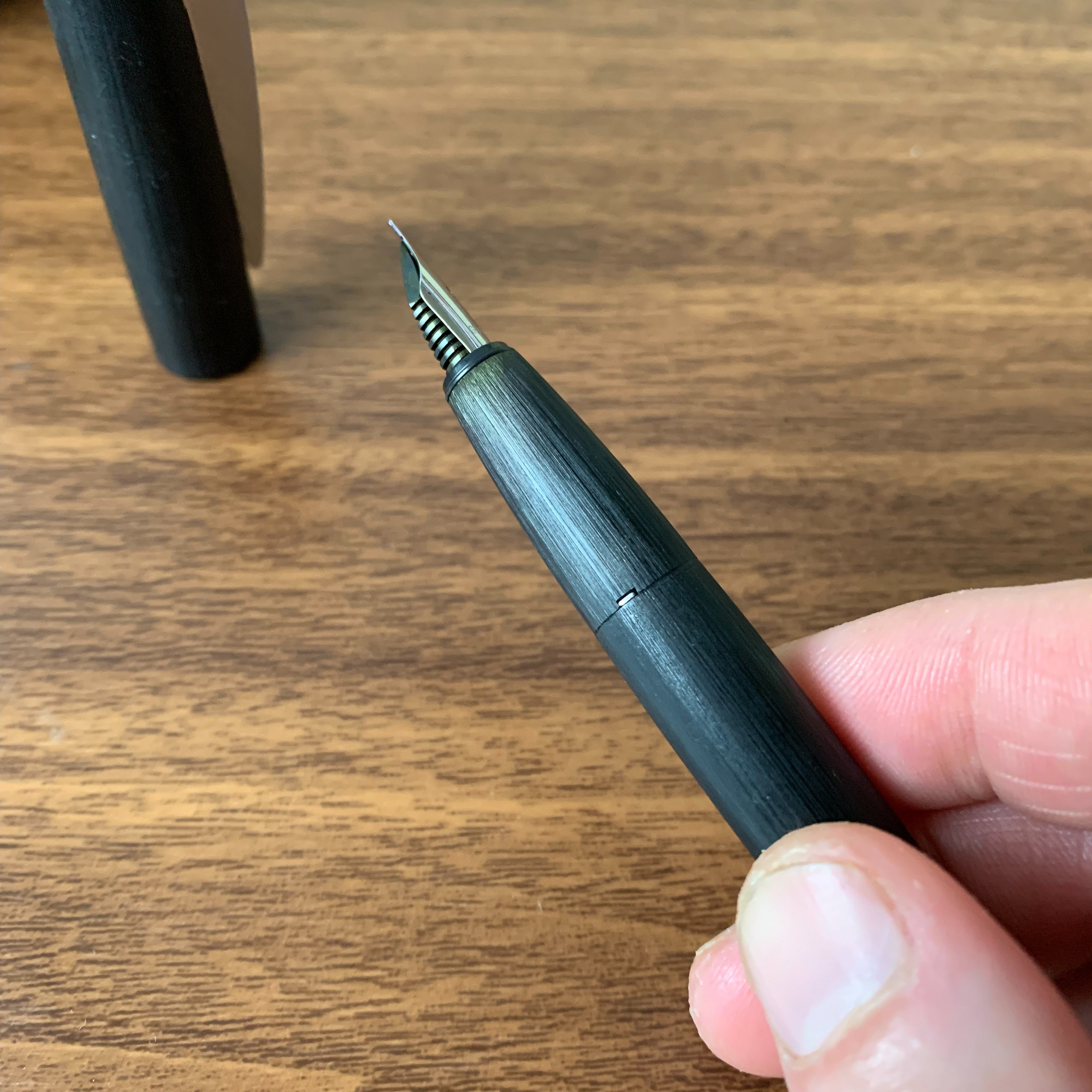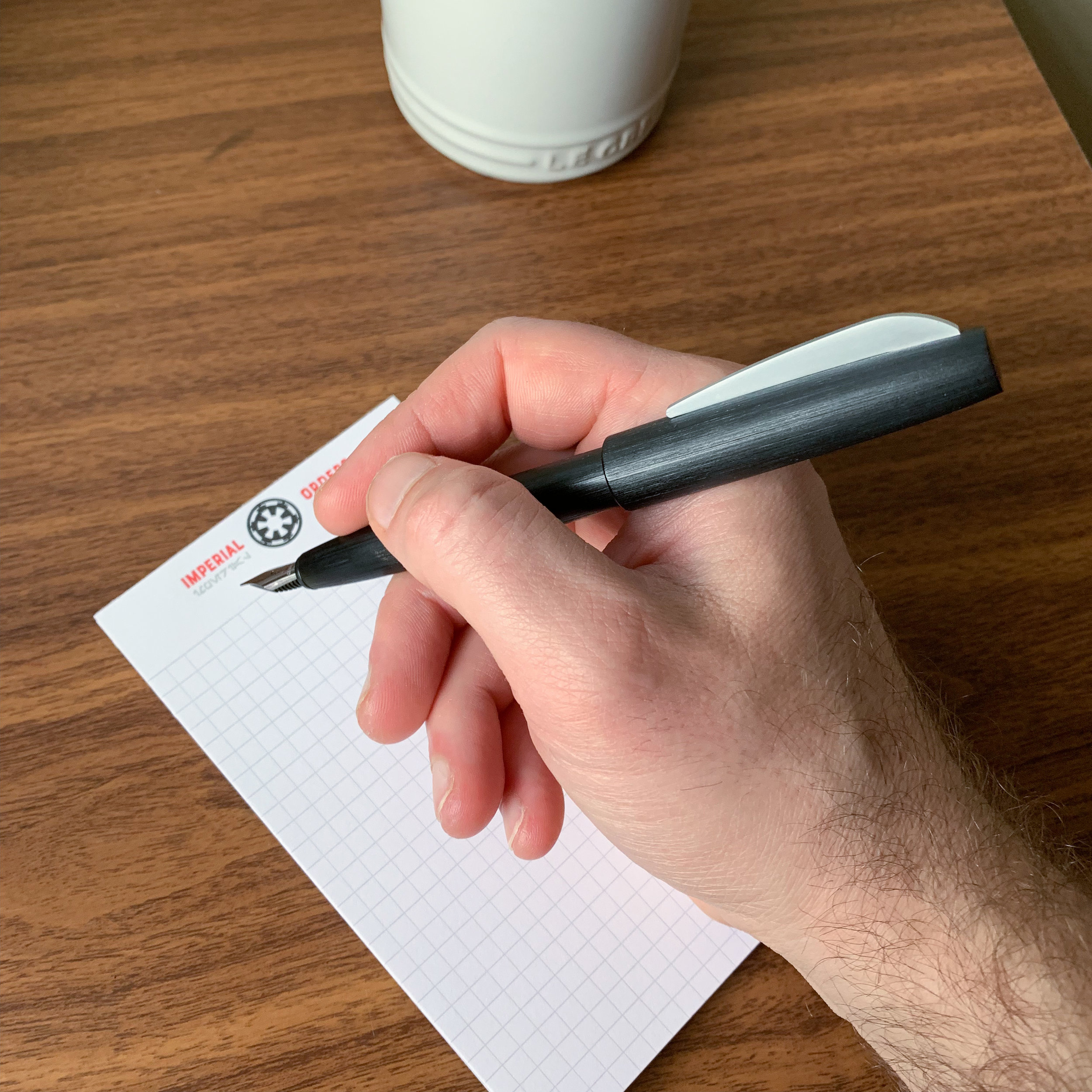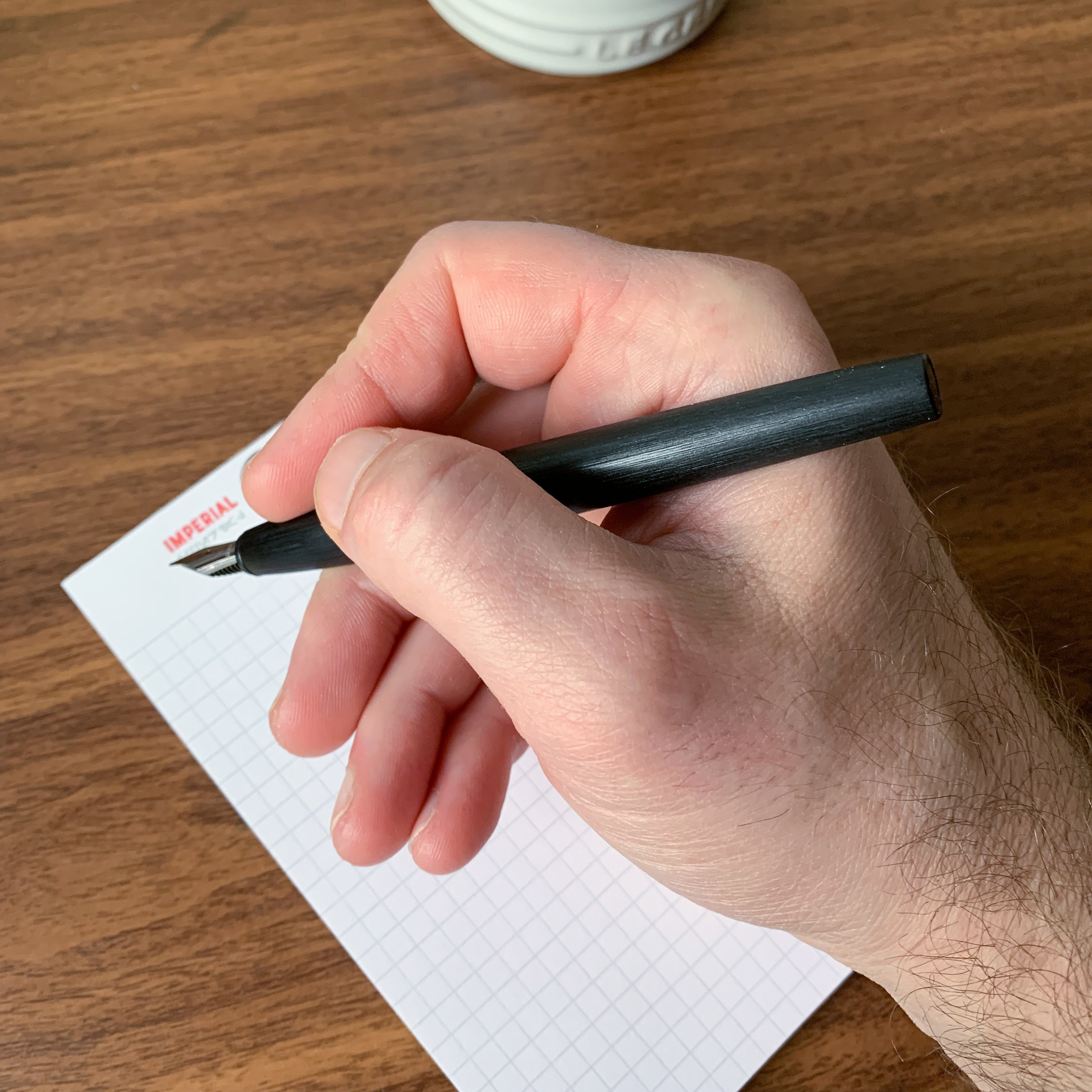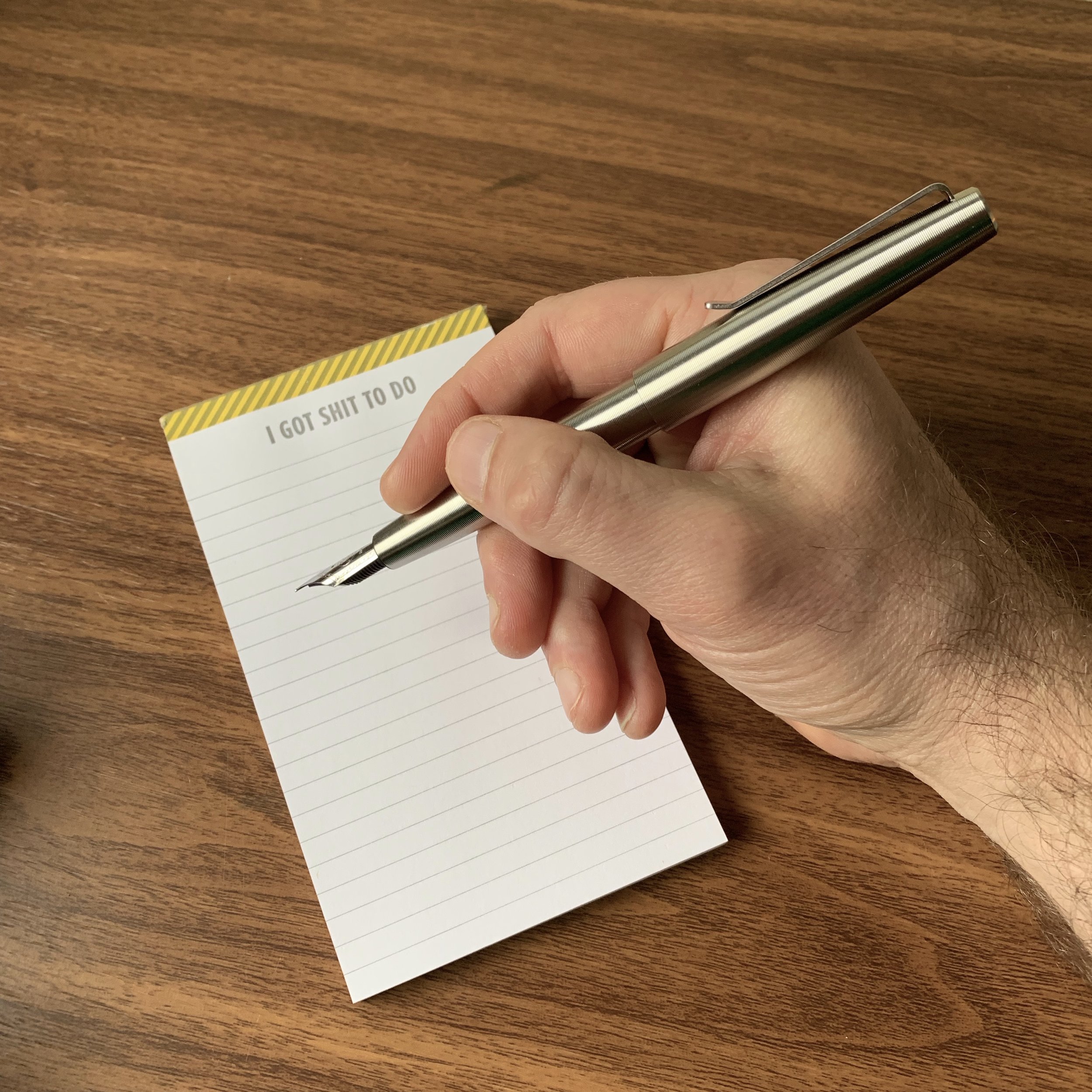Up on the blog today: more adventures in the online stationery bargain bin, with this entry examining a recent release out of China, the Moonman N3. I discovered this pen via Frank’s “Chinese Pen News You Need to Know” update for January and February, and the blue striated material, which Moonman refers to as “celluloid,” jumped out at me. Despite some immediate skepticism of the claim of “celluloid” at this price point - confirmed by the fact that I have seen this particular material used elsewhere and NOT labeled celluloid - I bought one because I wanted to see if Moonman could justify the (slightly) higher price than the sub-$20 market of the M2 eyedropper.
Let’s get this out of the way first: this pen is definitely not “celluloid,” despite how it’s described in the listings, but to be honest I didn’t expect to spend $35 and receive a real celluloid fountain pen. I suspect this might be more of a translation issue than anything else, because in other listings I’ve seen Moonman pens labeled as “celluloid resin acrylic” or “celluloid acrylic",” which just doesn’t make any sense. In any event, the material is still nice, and appears to be the same acrylic used in more expensive pens like the special edition FPN “Blue Pearl” Bulkfiller from Conid, as well as Monteverde’s “Giant Sequoia” pen.
I understand that Moonman uses mostly Chinese-manufactured nibs, none of which are labeled the typical “Iridium Point Germany,” but rather have a custom Moonman imprint. The Moonman nibs I have used have all been excellent and well-tuned out of the box.
Product description issues aside, Moonman has done a nice job with the N3. The fit and finish exceeds that of much more expensive pens in my collection, and the nib comes well-tuned, which is something of a Moonman hallmark and uncommon at this price point. Note that the N3 is on the slimmer side - I’d personally prefer a wider-diameter barrel, but the pen has a nice balance, posts ok (though a little long), and is lightweight. The generic converter is just that - generic - but I haven’t experienced any inkflow issues.
Even the somewhat generic pen box feels much nicer than what typically comes with pens at this price point.
Moonman continues the trend of Chinese pen companies targeting a segment of the market that previously has been dominated by TWSBI and neglected by other companies: the $20-50 range. It’s certainly rare to see a pen with a more traditional, “professional” design cost this little money, and for it to be of decent quality, well, that’s even more uncommon. At least two other Moonman offerings take this same approach: the M200 and the M300, which hit a slightly higher price point and apparently feature Schmidt nibs.
The Moonman Logo on the cap finial adds a bit of class, and makes this pen look more upmarket.
Takeaways and Where to Buy
I’ve been favorably impressed with every Moonman pen I’ve tried. From the original M2 eyedropper to the slightly more elaborate N3, these pens easily outperform their price point. I also appreciate the fact that they aren’t “homage” (much less knockoff) pens, and that Moonman appears to be attempting to do something original with their designs. Given that I know I’m not the only one who feels this way, it’s only a matter of time before Moonman makes its way into the mainstream. Depending on their distribution chain, it’s easily a brand that pen retailers should consider stocking.
Currently, you can purchase the Moonman N3 and other Moonman pens via various eBay sellers. While the N3 is slightly more expensive than the company’s other offerings, the pen is nicely finished and the nib is well-tuned. This one will stay in the collection.
Disclaimer: This post contains links to paid sponsors and affiliates. I purchased the pen featured in this review with my own funds, for my own use.


